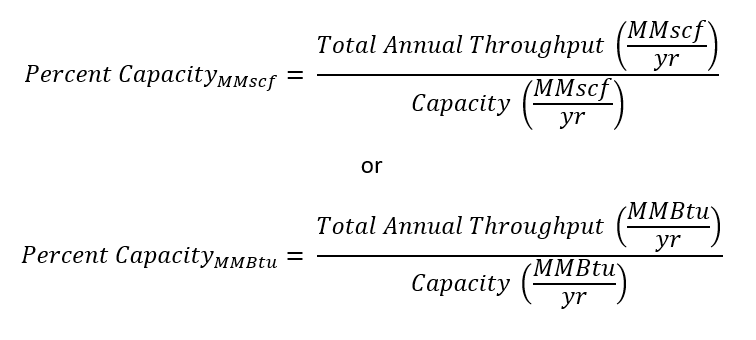Proposed Rule to Control Emissions from Flares in Ventura County, California.
Posted: June 28th, 2023
Authors: Michael M.
Under California Assembly Bill 617 (AB 167), Air Districts in nonattainment for one or more air pollutants were required to adopt an expedited schedule by January 2021 for the implementation of Best Available Retrofit Control Technology (BARCT)1 by December 31, 2023.
The Ventura County Air Pollution Control District (VCAPCD) has proposed to adopt Rule 74.35 in their effort reduce emissions of oxides of nitrogen (NOX) and reactive organic compounds (ROC) from flares at facilities in Ventura County, as outlined in their BARCT schedule approved in December 2018.
As proposed, Rule 74.35 will apply to owners and operators of flares with a total rated heat input greater than or equal to one million British Thermal Units per hour (MMBtu/hr).
Emissions Limits:
VCAPCD has proposed the following emissions limits for flares installed, replaced, or relocated after December 31, 2023 in Table 1 of Proposed Rule 74.35:
| Type of Flare Gas | NOX | Carbon Dioxide (CO) | ROC |
| lb/MMBtu | |||
| Digester gas | 0.025 | 0.06 | 0.038 |
| Landfill gas | 0.025 | 0.06 | 0.038 |
| Produced gas2 | 0.018 | 0.01 | 0.008 |
| Other flare gas | 0.06 | Not Applicable (N/A) | N/A |
| ROC Liquid Handling | |||
| ROC liquid holding | 0.25 | 0.37 | N/A |
| ROC liquid transfer | lb/1,000 gallons loaded | ||
| 0.034 | 0.05 | N/A | |
Produced Gas Throughput Limits:
Facilities who flare produced gas with estimated facility-wide annual emissions greater than or equal to five tons per year (ton/yr) of NOX or ROC or greater than or equal to 100 ton/yr of CO will be subject to the following throughput limits:
| Flare Category | Throughput Limit |
| Replaced Flares | 110% of average annual throughput to that flare or flare station for the three calendar years immediately preceding the submittal of the flare application based on annual emissions reporting. |
| Replaced Flares where historical data is not available | 45 million standard cubic feet per year (MMscf/yr) |
| New Flares | 45 MMscf/yr |
Flare Reduction Plans:
Facilities who operate a flare or flare station permitted before July 1, 2023 are required to calculate the annual percent capacity as follows3:
If the flare or flare station’s annual capacity exceeds the following thresholds, as provided in Table 2 of proposed Rule 74.35, for two consecutive years the Facility will be required to submit a Flare Reduction Plan with a Statement of Intent.
| Type of Flare Gas | Capacity Threshold |
| Digester Gas | 70% |
| Landfill Gas | 20% |
| Produced gas | 20% |
| All other gas | 5% |
Facilities have three options when preparing a Flare Reduction Plan:
- Limit flare or flare station throughput:
- Within 6 months4 of exceeding the capacity threshold for a second consecutive year, facilities must submit the following:
- Alternative methods to reduce flare or flare station throughput below the capacity thresholds identified in Table 2; and
- A timeline to implement the alternative method.
- Within 13 months of exceeding the capacity threshold for a second consecutive year and annually until the annual percent capacity is reduced below the applicable threshold, facilities must submit a “Notification of Increments of Progress” including following:
- Actions that have been implemented to reduce flaring throughput;
- Actions that will be implemented to reduce flaring throughput; and
- Changes to the original Notification of Intent.
- Within 36 months of exceeding the capacity threshold for a second consecutive year, facilities must implement the Flare Reduction Plan.
- Within 30 days of the end of the next year after the Flare Reduction Plan has been implemented, the flare capacity must be at or below the thresholds in Table 2.
- Replace or modify the flare to meet the emissions limits found in Table 1:
- Within 6 months5 of exceeding the capacity threshold for a second consecutive year, facilities must submit an Authority to Construct (ATC) application for the replacement or modification of the flare.
- Within 18 months of the issuance of the ATC, the flare installation or modification must be completed.
- Demonstrate that that the emissions limits found in Table 1 are met by an enclosed flare.
Notification Requirements:
Facilities who operate flares will be required to submit a “Notification of Flare Inventory and Capacity” within 30 days of the adoption of proposed Rule 74.35. The Notification of Flare Inventory and Capacity will include the following:
- Permit number;
- Date of installation;
- Type of gas combusted;
- Maximum rated capacity;
- Description of fuel meter, if installed; and
- Date of last source test, if applicable.
Maintenance Requirements:
Facilities must maintain flares in accordance with manufacture specifications. If manufacturing specifications are not available, facilities shall use:
- American Petroleum Institute (API) Standard 537, Third Edition, March 2017; or
- An alternative method approved by VCAPCD.
Labeling Requirements:
Flares installed, relocated, or modified after the date of adoption of proposed Rule 74.35 must be labeled with the model number and the rated heat input capacity.
Enclosure Requirements:
Flares installed, replaced, or relocated after December 31, 2023 must be enclosed.
Visible Emissions Restrictions:
Flares with a rated heat input capacity greater than or equal to one MMBtu/hr may not produce visible smoke on a continuous basis after December 31, 2023.
Recordkeeping Requirements:
Facilities who either exceed the annual capacity threshold for two consecutive calendar years or claim exemption from Rule 74.35 by limiting operations to no more than 200 hours per 12-month rolling period must install and operate a fuel meter for each fuel, excluding pilot gas, within 6 months of the adoption of proposed Rule 74.35. The fuel meter must be calibrated annually.
Testing Requirements:
Within 12 months of the adoption of proposed Rule 74.35, facilities must source test flares subject to the emissions standards found in Table 1 to determine NOX, ROC, and CO emissions rates. The source testing will then be conducted no less than every two years after the initial source test.
Exemptions:
VCACPD has provided the following exceptions from the requirements of proposed Rule 74.35:
- Flares rated less than one MMBtu/hr;
- Flares firing only propane and/or butane;
- Flares located at landfills that collect less than 2,000 MMscf of landfill gas per year if:
- The landfill has ceased accepting waste; or
- The California Department of Resource Recycling and Recovery has classified the landfill as an inert waste disposal site or an asbestos contaminated waste.
- Flares used for well testing, tank degassing, and pipeline degreasing;
- Flares that fire regeneration gas.
Flares or flare stations that emit less than 30 pounds of NOX per month are not subject the requirements of Section B of proposed Rule 74.35 (i.e., emissions and produced gas throughput limits; flare reduction plans; notification, maintenance, labeling, and enclosure requirements; and visible emissions restrictions) if the following criteria are met:
- The flare or flare station is subject to an enforceable emissions limit, and
- The flare or flare station operates in compliance with the emissions limit.
Flares or flare stations that operate no more than 200 hours per year, excluding emergency flares are not subject the requirements of Section B of proposed Rule 74.35 if the following criteria are met:
- The flare or flare station is subject to an operating hours or throughput limit, and
- The flare or flare station operates in compliance with the operating hours or throughput limit.
What is Next?
Based on information presented by VCAPCD during recent working group meetings related to proposed Rule 74.35, it is expected that VCACPD will propose the Rule for final adoption during the July 11, 2023 Hearing Board Meeting.
ALL4 has extensive experience helping industrial facilities comply with regulations in the VCAPCD. With the expected adoption date of the Rule approaching, it is never too early to evaluate your compliance obligations and strategy. If you are interested in learning how this rule or other VCAPCD rules may affect your facility, please feel to reach out to me at 610.442.1131 or mmchale@all4inc.com.
1Under Section 40406 of the California Health and Safety Code BARCT is defined as “an emission limitation that is based on the maximum degree of reduction achievable, taking into account environmental, energy, and economic impacts by each class or category of source.”
2Under Subsection G.2 of proposed Rule 74.35, produced gas is defined as “organic compounds that are both gaseous at standard temperature and pressure and are associated with the production, gathering, separation or processing of crude oil.”
3“Capacity” as used in the equations above based on manufacturing design, if known, or the maximum permitted hourly capacity. For flare stations, it reflects the combined total capacity of all the flares in the flare station.
4Within 12 months for Publicly Owned Facilities.
5Ibid.


